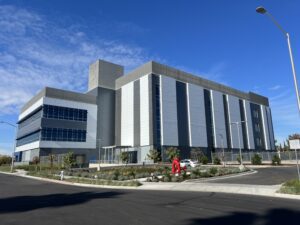The Current State of Cloud Computing and Its Challenges

An Overview on Cloud Computing:
The current cloud computing market size is valued at over $500 billion and is expected to reach $1.6 trillion by 2030.
Data centers currently serve as the backbone of cloud computing infrastructure. These expansive facilities house an array of servers, storage systems, and networking equipment needed to support cloud services.
Cloud computing services are divided based on service type, including Infrastructure as a Service (IaaS), Platform as a Service (PaaS), and Software as a Service (SaaS). IaaS emerges as the largest segment with 26% of the total cloud market and is expected to grow at 31% year over year.
Furthermore, cloud computing services are categorized based on deployment mode, which includes public cloud, private cloud, and hybrid cloud. The hybrid cloud constitutes the largest segment with 72% of the cloud computing market, with public cloud and private cloud following with 24% and 4%.
The Current Landscape of Cloud Computing
With 2,600 active data centers across the United States and numerous others in development or planning stages, one might ponder: what other factors contribute to this growth? The growth of cloud computing finds momentum in several driving factors, including:
- Advancements in AI
- The proliferation of big data
- Enhanced flexibility
- Scalability options
- Cost-effectiveness
- Ease of implementation
- Time-saving benefits for IT staff
This is not only the case in America, but internationally as well.
While the rapid expansion of cloud computing has undoubtedly revolutionized the way businesses operate and data is managed, this soaring growth hasn’t come without its share of challenges. As organizations increasingly rely on cloud infrastructure to drive innovation, enhance efficiency, and streamline operations, they are also grappling with a host of critical issues that demand attention and resolution.
Here are just two of them:
- A typical data center uses 1.5-5 million gallons of water per day for cooling, depending upon size. However, most data centers are very reluctant to disclose their usage, additives, disposal plans, and risk management of their water supply.
- Data centers consume vast amounts of energy, contributing to carbon emissions and environmental concerns. The energy demands of data centers are projected to continue increasing as cloud usage grows.
The growth of cloud computing has undeniably transformed industries and propelled technological innovation to new heights that weren’t thought to be possible. Yet, there’s a growing awareness of how cloud computing impacts communities and the environment, prompting a pushback against data centers.
To stay informed about the challenges and solutions in the rapidly evolving world of cloud computing, be sure to keep an eye out for our upcoming articles on this topic. We’ll delve deeper into the issues facing data centers and provide insights to help navigate the complexities of the cloud.
Join Us.
To stay up to date on what we're working on, join our mailer.
